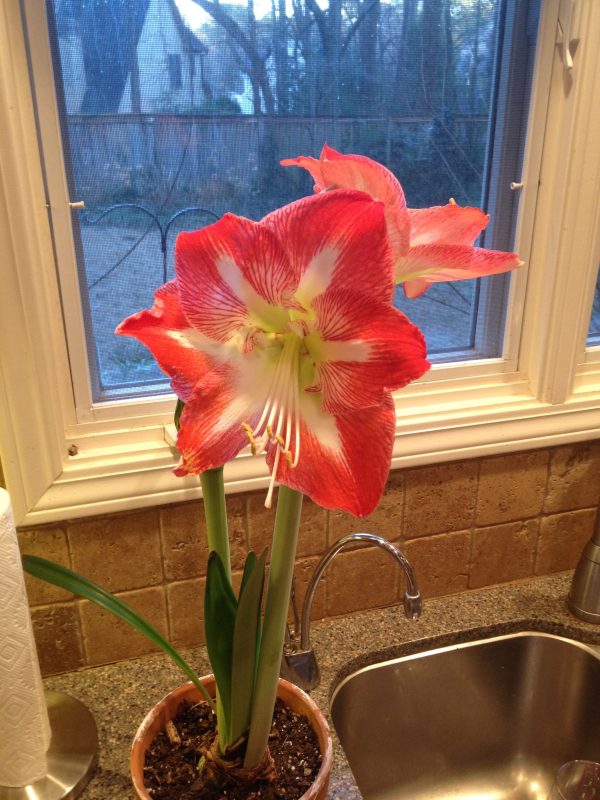Colocasia vs. Alocasia vs. Xanthosoma
All are called elephant ear by gardeners. Some are edible and some are not.
Following is a collection of identification tips taken from various websites. I found the most useful to be
http://www.suite101.com/article.cfm/shade_gardening/95670
and
http://davesgarden.com/guides/articles/view/1342/
Alocasia: leaves are held horizontally, with the tips pointed, more-or-less, upwards. Alocasia macrorhizza has shiny leaves and a more elongated corm. Alocasias tend to prefer part shade and well-drained soil. Alocasia have the petiole connected at the leaf notch.
Colocasia: leaf tips point downward. Colocasia esculenta , plain old green elephant ear has a more or less rounded, bowling ball shaped, corm. Colocasia can take full sun and almost aquatic conditions with plenty of water. Colocasia generally have the petiole (leaf stem) connected to the leaf down a bit from the notch in the leaf.
Xanthosoma: leaf tips point downward. Xanthosomas have a sagittate (arrow-shaped) leaf blade (there are a few exceptions to this) with a smooth, sometimes waxy upper surface and thick ribs on the lower surface, often quilted at the veins. It also has a collecting vein that runs all around the leaf, just inside the margin. The petiole attaches at the notched edge of the leaf
The real differences have to do with flower morphology, but there are many Alocasia hybrids with colorful leaves that face downwards like Colocasia.
• Alocasia and Colocasia were once considered the same genus (Colocasia) and there still seems to be massive cross-over in references that mention them by common name, since both are called Taro and many species of both are edible.
• The most important difference between the two is microscopic, found within the female flowers.
• In Colocasia the placenta is along the interior sides of the embryonic future berry from top to bottom with the many “stems” of the ovaries attached to the placenta along the interior sides of the ovary.
• In Alocasia the placenta is basal, and a sparser number of ovaries and “stems” are attached to it within the embryonic future berry but along its interior base.












